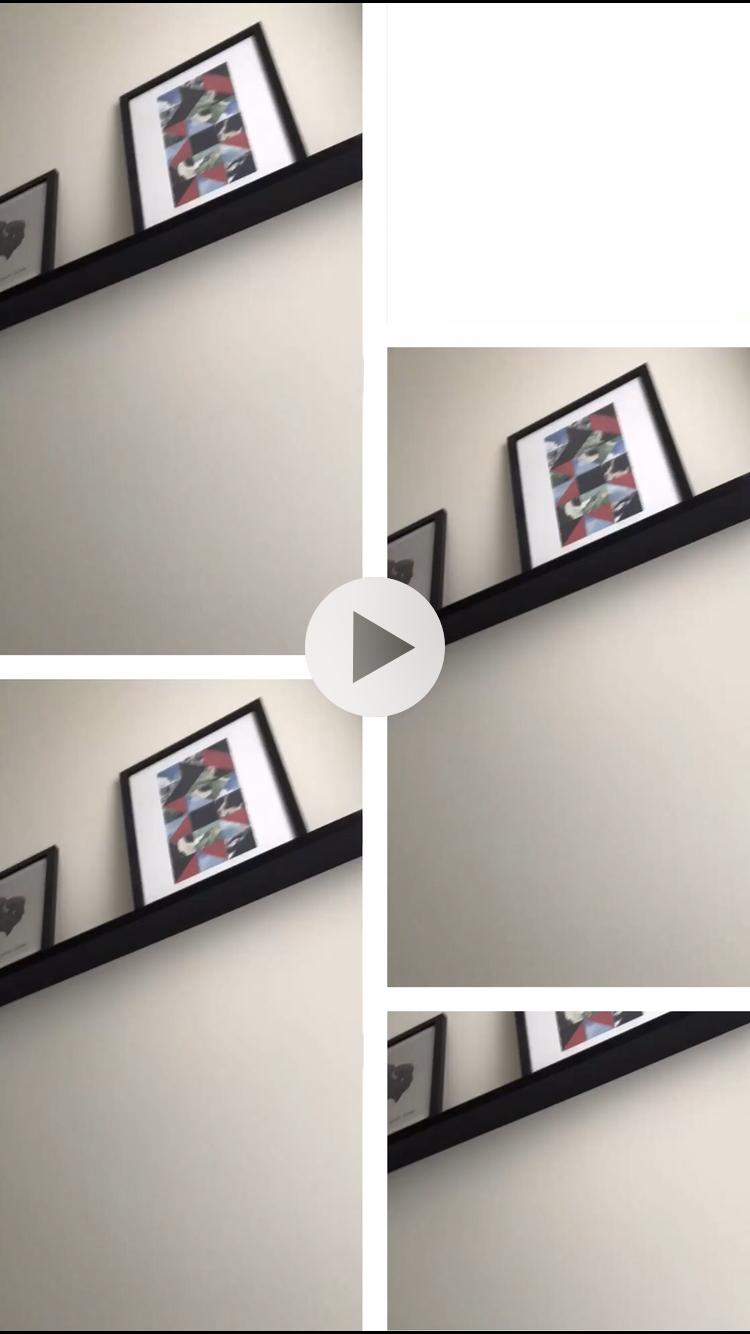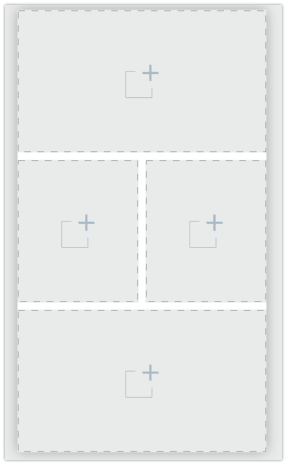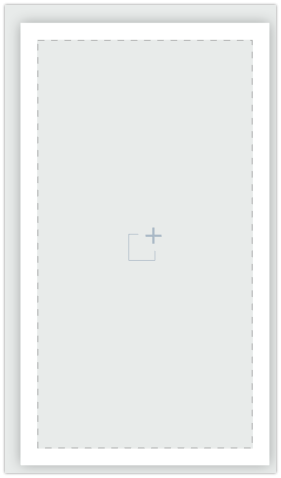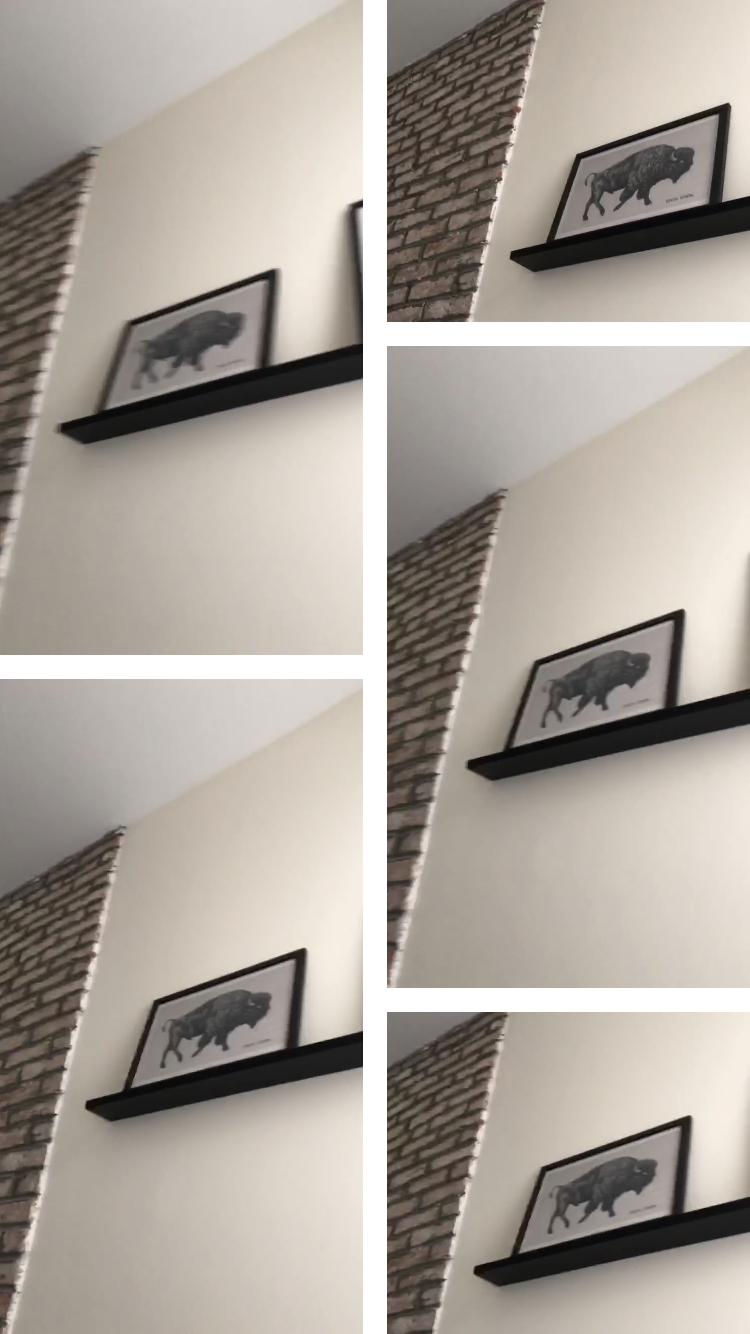AVFoundation: как обрезать и масштабировать видео?
Приложение представляет собой тип фото и видео редактор. Приложение использует ASDK. Есть ячейка, в ней могут быть разные формы других ячеек (узлов), их количество может быть от 1 до 15. Пользователь может добавлять видео в каждую ячейку, при этом он может масштабировать видео или перемещаться по ячейкам. Проблема в том, что вам нужно сделать композицию из этих видео в одно и заполнить пробел между ячейками фоном основной ячейки (например, белым). Проблема состоит в том, что некоторые видео импортируются правильно, имеют правильную форму (или форму по умолчанию, которая заполняет всю ячейку, в которой находится видео), и когда некоторые видео экспортируются в результате этих видео, нет ни одного видео, в то время как одно видео может отображаться в одной ячейке в другой в той же композиции, когда экспорт не отображается. Подскажите пожалуйста, как это можно исправить?
func videoUrlFromCell(cell: StoryPageNode, cellSize: CGSize, completion: @escaping ((_ url: URL) -> Void)) {
// Calculating size of the exported video in points. Should be multiple of 16, otherwise video exporter will return error
let renderWidth = cellSize.width - cellSize.width.truncatingRemainder(dividingBy: 16)
let renderHeight = cellSize.height - cellSize.height.truncatingRemainder(dividingBy: 16)
// Calculating size of the exported video in pixels
let screenFactor = UIScreen.main.scale
let renderSize = CGSize(width: screenFactor * renderWidth, height: screenFactor * renderHeight)
// Calculating a scale correction for views. As exported video can have a different size than cell, we need to correct all positions and sizes of media views, so videos will have correct position/size
let scaleY = screenFactor * renderHeight / cellSize.height
let scaleX = screenFactor * renderWidth / cellSize.width
let scalePoint = CGPoint(x: scaleX, y: scaleY)
var mainCompositionInst: AVMutableVideoComposition!
var mixComposition: AVMutableComposition!
// Generating a background url which will be used below each video. Background itself is a 100x100 black or white video file (probably should be 1x1) that will be reused for each video. It will be scaled and positioned according to each media node. (hack)
VideoBackgroundGenerator.backgroundVideoFilePath(storyPage: cell.page).then(on: .main) { (backgroundURL) -> Promise<UIImage> in
// Main function where all the composition happens
let tuple = self.getVideoComposition(cell, backgroundURL: backgroundURL, renderSize: renderSize, scalePoint: scalePoint)
mainCompositionInst = tuple.mainCompositionInst
mixComposition = tuple.mixComposition
// Generating an overlay image with all the static content and transparent areas instead mediaNodes with videos. This image will be placed on top of the final video composition with all the videos.
return self.overlayFromCell(cell: cell, cellSize: cellSize, overlaySize: renderSize)
}.then(on: .main) { (image) -> Promise<URL> in
// We add overlay image on top of the composition and export video
self.addOverlay(to: mainCompositionInst, size: renderSize, overlayImage: image)
return self.exportVideoSession(mixComposition, videoComposition: mainCompositionInst)
}.then({ (url) in
completion(url)
}).catch { (error) in
debugPrint(error.localizedDescription)
}
}
private func getVideoComposition(_ cell: StoryPageNode, backgroundURL: URL, renderSize: CGSize, scalePoint: CGPoint) -> (mainCompositionInst: AVMutableVideoComposition, mixComposition: AVMutableComposition) {
let pageData = cell.page
var maxVideoDuration = 1.0
let scaleX = scalePoint.x
let scaleY = scalePoint.y
let mixComposition = AVMutableComposition()
var layerInstructions = [AVMutableVideoCompositionLayerInstruction]()
// Looping through media models on the page
for (id, media) in pageData.mediaList {
guard let videoModel = media as? StoryPageMediaVideo else {
debugPrint("error", #function, #line)
continue
}
if let videoAssetUrl = videoModel.mediaUrl {
let videoAsset = AVAsset(url: videoAssetUrl)
let videoTrack = videoAsset.tracks(withMediaType: AVMediaType.video).first
// Getting the size of the video in pixels and it's orientation
var videoTrackSize = videoTrack?.resolution() ?? CGSize.zero
guard let mediaNode = cell.mediaViewFor(mediaId: id) else {
debugPrint("media node error", #function, #line)
continue
}
let videoNodeFrame = mediaNode.frame
// Get scaled size of the video node according to the scale calculated eralier
let scaledSize = CGSize(width: videoNodeFrame.width * scaleX, height: videoNodeFrame.height * scaleY)
// Calculating a scale which will give us aspect fill size for the video inside the scaled size of the media node
var aspectFillScale = self.aspectFillScale(for: videoTrackSize, in: scaledSize)
// If user scaled video somehow, we add this to our scale
if let customScale = videoModel.specificScale {
aspectFillScale *= customScale
}
// Now when we know a scale for the aspect fill - calculating the video track size (to fill the media node)
videoTrackSize = CGSize(width: aspectFillScale * videoTrackSize.width, height: aspectFillScale * videoTrackSize.height)
// Calculating distance to center of the media node
let distanceToCenter = CGPoint(x: videoTrackSize.width / 2 - scaledSize.width / 2, y: videoTrackSize.height / 2 - scaledSize.height / 2)
// Transform of the video track in the main composition
var transform = CGAffineTransform.identity
// Moving transform to the center of the media node
transform = transform.translatedBy(x: videoNodeFrame.origin.x * scaleX - distanceToCenter.x, y: videoNodeFrame.origin.y * scaleY - distanceToCenter.y)
// If user moved video somehow, calculate scaled offset
var customCenterTransformed = CGPoint.zero
if let customCenterRaw = videoModel.specificCenter {
customCenterTransformed = CGPoint(x: customCenterRaw.x * scaleX - scaledSize.width / 2, y: customCenterRaw.y * scaleY - scaledSize.height / 2)
}
// Rotate transform around center if media node is rotated (used in the FF1 templates for example).
if mediaNode.transform.rotation != 0 {
transform = transform.translatedBy(x: videoTrackSize.width/2, y: videoTrackSize.height/2)
transform = transform.rotated(by: mediaNode.transform.rotation)
transform = transform.translatedBy(x: -videoTrackSize.width/2, y: -videoTrackSize.height/2)
}
if let videoTrack = videoTrack {
let rotation = self.rotation(with: videoTrack.preferredTransform)
if rotation != 0 {
transform = transform.rotated(by: rotation)
}
}
// Apply custom center offset. We need to do this after rotation because otherwise rotation would be around a different point, not around center. See - https://stackru.com/questions/8275882/one-step-affine-transform-for-rotation-around-a-point
if customCenterTransformed != .zero {
transform = transform.translatedBy(x: customCenterTransformed.x, y: customCenterTransformed.y)
}
// Apply scale
transform = transform.scaledBy(x: aspectFillScale, y: aspectFillScale)
// Calculating the crop frame for this media node (video should not be visible outside of the media node bounds . It is calculated relative to the video transform because this is how it is applied by AVFoundation
let cropFrame = CGRect(x: (distanceToCenter.x - customCenterTransformed.x) / aspectFillScale, y: (distanceToCenter.y - customCenterTransformed.y) / aspectFillScale, width: scaledSize.width / aspectFillScale, height: scaledSize.height / aspectFillScale)
// Generate a layer instruction for background video for this media node
let layerBackgroundInstruction = backgroundLayerInstruction(mediaView: mediaNode, scaleX: scaleX, scaleY: scaleY, mixComposition: mixComposition, url: backgroundURL)
// Generate a layer instruction for the video itself
let layerInstruction = self.layerInstruction(for: videoAsset, mixComposition: mixComposition, transform: transform, cropFrame: cropFrame, trackId: Int32(id), isMuted: videoModel.isMuted, isLoop: videoModel.loopVideo)
// If video is not looped we hide it after it finishes (hack)
if videoModel.loopVideo {
maxVideoDuration = Constants.Video.videoLengthMaxInSeconds
} else {
let videoDuration = videoTrack?.timeRange.duration.seconds ?? 0
maxVideoDuration = max(maxVideoDuration, videoDuration)
let removeFromVideo = transform.scaledBy(x: 0, y: 0)
layerInstruction.setTransform(removeFromVideo, at: CMTime(seconds: videoDuration, preferredTimescale: CMTimeScale.init(exactly: Constants.Video.videoTimeScale)!))
}
layerInstructions.append(layerBackgroundInstruction)
layerInstructions.append(layerInstruction)
}
}
// Sorting videos depending on their id. Videos with a bigger id will be displayed on top of videos with a lower id (probably a hack too)
layerInstructions.sort { $0.trackID > $1.trackID }
// Set up the video instruction
let mainInstruction = AVMutableVideoCompositionInstruction()
let duration = CMTime(seconds: maxVideoDuration, preferredTimescale: CMTimeScale.init(exactly: Constants.Video.videoTimeScale)!)
mainInstruction.timeRange = CMTimeRangeMake(kCMTimeZero, duration)
mainInstruction.layerInstructions = layerInstructions
let mainCompositionInst = AVMutableVideoComposition()
mainCompositionInst.renderSize = renderSize
mainCompositionInst.instructions = [mainInstruction]
mainCompositionInst.frameDuration = CMTimeMake(1, 30)
return (mainCompositionInst, mixComposition)
}
private func exportVideoSession(_ asset: AVAsset, videoComposition: AVMutableVideoComposition) -> Promise<URL> {
let promise = Promise<URL>(on: .main) { fulfill, reject in
let uuid = UUID().uuidString
let url = self.temproraryFilesFolder.appendingPathComponent("\(uuid).mov")
let exporter = AVAssetExportSession(asset: asset, presetName: AVAssetExportPresetHighestQuality)
exporter?.outputURL = url
exporter?.outputFileType = AVFileType.mov
exporter?.videoComposition = videoComposition
exporter?.exportAsynchronously(completionHandler: {
if let error = exporter?.error {
reject(error)
} else {
fulfill(url)
}
})
}
return promise
}
/**
Creates layer instruction for a video asset
- Parameter videoAsset: video asset instance
- Parameter mixComposition: composition instance
- Parameter transform: affine transform for layer instruction
- Parameter cropFrame: crop rectangle
- Parameter trackId: composition track id
- Parameter isMuted: mute video or not
*/
private func layerInstruction(for videoAsset:AVAsset, mixComposition:AVMutableComposition, transform:CGAffineTransform, cropFrame:CGRect, trackId:Int32, isMuted:Bool, isLoop:Bool) -> AVMutableVideoCompositionLayerInstruction {
// Getting video and audio tracks from AVAsset
let assetTrack = videoAsset.tracks(withMediaType: AVMediaType.video)[0]
var assetAudioTrack:AVAssetTrack?
if !isMuted
{
assetAudioTrack = videoAsset.tracks(withMediaType: AVMediaType.audio).first
}
let exportVideoTrack = mixComposition.addMutableTrack(withMediaType: AVMediaType.video, preferredTrackID: trackId)
var exportAudioTrack:AVMutableCompositionTrack?
if assetAudioTrack != nil
{
exportAudioTrack = mixComposition.addMutableTrack(withMediaType: AVMediaType.audio, preferredTrackID: trackId)
}
var startSegmentTime = kCMTimeZero
var segmentDuration = assetTrack.timeRange.duration
let timeScale = assetTrack.naturalTimeScale
let duration = CMTime(seconds: isLoop ? Constants.Video.videoLengthMaxInSeconds : assetTrack.timeRange.duration.seconds, preferredTimescale: timeScale)
segmentDuration = CMTimeMinimum(segmentDuration, duration)
// Repeating the video if it's duration less the the max video duration
repeat {
if CMTimeAdd(startSegmentTime,segmentDuration).value > duration.value
{
segmentDuration = CMTimeSubtract(duration, startSegmentTime)
}
do {
try exportVideoTrack?.insertTimeRange(CMTimeRangeMake(kCMTimeZero, segmentDuration), of: assetTrack, at: startSegmentTime)
if let assetAudioTrack = assetAudioTrack
{
try exportAudioTrack?.insertTimeRange(CMTimeRangeMake(kCMTimeZero, segmentDuration), of: assetAudioTrack, at: startSegmentTime)
}
}
catch let error
{
print(error)
}
startSegmentTime = CMTimeAdd(startSegmentTime, segmentDuration)
} while (startSegmentTime.value < duration.value)
let videolayerInstruction = AVMutableVideoCompositionLayerInstruction(assetTrack: exportVideoTrack!)
// Some videos seems to be mirrored, hack for this kind of video. Probablt we should rework this
// if preferredTransform.c == -1 && preferredTransform.tx == 0 && preferredTransform.ty == 0 {
// preferredTransform = preferredTransform.scaledBy(x: 1, y: -1)
// fatalError("Some videos seems to be mirrored, hack for this kind of video. Probablt we should rework this")
// }
debugPrint("setTransform", "coordinate", transform.coordinate(), "cropFrame", cropFrame)
videolayerInstruction.setTransform(transform, at: kCMTimeZero)
videolayerInstruction.setCropRectangle(cropFrame, at: kCMTimeZero)
return videolayerInstruction
}
private func rotation(with t: CGAffineTransform) -> CGFloat {
// return atan2f(Float(CGFloat(t.b)), CGFloat(t.a))
let b = Float(t.b)
let a = Float(t.a)
let res = atan2f(b, a)
return CGFloat(res)
}
/**
Adds overlay image on top of a video layer
- Parameter composition: video composition to add overlay to
- Parameter size: result video size
- Parameter overlayImage: overlay image instance
*/
private func addOverlay(to composition: AVMutableVideoComposition, size: CGSize, overlayImage: UIImage) {
let overlayLayer = CALayer()
overlayLayer.frame = CGRect(x: 0, y: 0, width: size.width, height: size.height)
overlayLayer.contents = overlayImage.cgImage
overlayLayer.opacity = 1
let parentLayer = CALayer()
let videoLayer = CALayer()
parentLayer.frame = CGRect(x: 0, y: 0, width: size.width, height: size.height)
videoLayer.frame = CGRect(x: 0, y: 0, width: size.width, height: size.height)
parentLayer.addSublayer(videoLayer)
parentLayer.addSublayer(overlayLayer)
composition.animationTool = AVVideoCompositionCoreAnimationTool(postProcessingAsVideoLayer: videoLayer, in: parentLayer)
}
//MARK: - Helpers
private func aspectFillScale(for size:CGSize, in containerSize:CGSize) -> CGFloat {
let widthRatio = containerSize.width / size.width
let heightRatio = containerSize.height / size.height
let scalingFactor = max(widthRatio, heightRatio)
return scalingFactor
}
private func transformFromRect(from source: CGRect, toRect destination: CGRect) -> CGAffineTransform {
return CGAffineTransform.identity
.translatedBy(x: destination.midX - source.midX, y: destination.midY - source.midY)
.scaledBy(x: destination.width / source.width, y: destination.height / source.height)
}
/**
Video background layer for video
- Parameter mediaView: template for video part
- Parameter scaleX: scale for video
- Parameter scaleY: scale for video
- Parameter url: path for background file
- Returns : Background layer under video
*/
private func backgroundLayerInstruction (mediaView:StoryMediaNode, scaleX:CGFloat, scaleY:CGFloat, mixComposition:AVMutableComposition, url: URL) -> AVMutableVideoCompositionLayerInstruction{
let videoBackgroundAsset = AVAsset(url: url)
let videoBackgroundTrack = videoBackgroundAsset.tracks(withMediaType: AVMediaType.video).first
let videoBackgroundTrackSize = videoBackgroundTrack?.resolution() ?? CGSize.zero
debugPrint("videoBackgroundTrackSize", videoBackgroundTrackSize)
let hideBorderValue: CGFloat = 1
var transformBG = CGAffineTransform(translationX: mediaView.frame.origin.x * scaleX - hideBorderValue, y: mediaView.frame.origin.y * scaleY - hideBorderValue)
transformBG = transformBG.scaledBy(x: ((mediaView.frame.size.width+hideBorderValue)/videoBackgroundTrackSize.width) * scaleX,
y: ((mediaView.frame.size.height+hideBorderValue)/videoBackgroundTrackSize.height) * scaleY)
transformBG = transformBG.translatedBy(x: videoBackgroundTrackSize.width/2, y: videoBackgroundTrackSize.height/2)
transformBG = transformBG.rotated(by: mediaView.transform.rotation)
transformBG = transformBG.translatedBy(x: -videoBackgroundTrackSize.width/2, y: -videoBackgroundTrackSize.height/2)
return self.layerInstruction(for: videoBackgroundAsset, mixComposition: mixComposition, transform: transformBG,cropFrame:mediaView.bounds, trackId:0,isMuted:true, isLoop: false)
}
Примеры шаблонов
Например, результат должен быть
Но я получил  результат видео https://monosnap.com/file/SHP33UvNbJeyGw7rX9i5lTTtmXd5lx
результат видео https://monosnap.com/file/SHP33UvNbJeyGw7rX9i5lTTtmXd5lx


